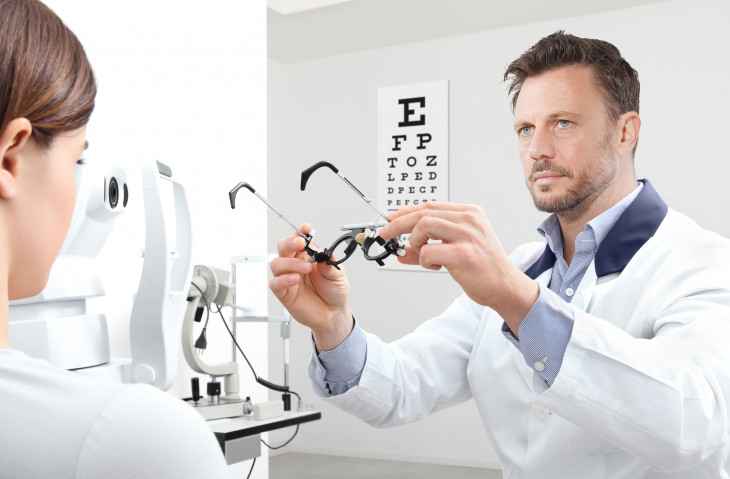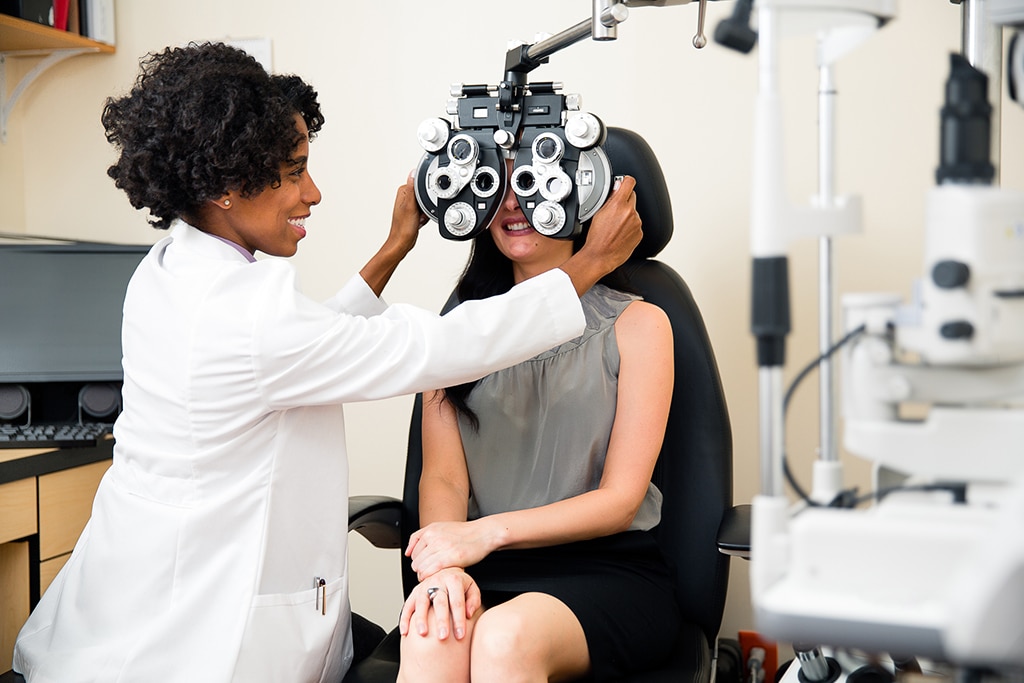Just How an Eye Doctor Can Change Your Vision Health in Chino
Just How an Eye Doctor Can Change Your Vision Health in Chino
Blog Article
Checking Out the most recent Technical Innovations in Optometry and What They Mean for Eye Doctors
In the ever-evolving field of optometry, recent technological developments are improving just how practitioners approach eye treatment. From the precision of Optical Coherence Tomography to the nuanced understandings provided by AI-driven analysis tools, these innovations are setting brand-new standards in client evaluation and therapy. Teleoptometry is positioned to redefine ease of access, making certain that experience transcends geographical limitations. As these advancements permeate the method, optometrists are confronted with the challenge of embracing these tools to enhance individual end results. The inquiry continues to be: how will these technological shifts redefine the roles and duties within the profession?
Developments in Diagnostic Equipment
Progressing the area of optometry, innovations in diagnostic devices have actually revolutionized the means eye treatment professionals analyze and identify visual problems and ocular conditions. The previous years has actually experienced significant technological innovations, making it possible for even more exact and comprehensive analyses. Optical Coherence Tomography (OCT), for instance, gives high-resolution cross-sectional photos of the retina, permitting the very early discovery of illness such as glaucoma and age-related macular deterioration. This non-invasive imaging strategy has actually ended up being indispensable in contemporary optometric technique.
An additional secret development is the introduction of innovative corneal topography systems, which map the surface curvature of the cornea with precision. These tools are particularly useful for fitting get in touch with lenses and detecting corneal conditions. Electronic retinal imaging has changed conventional ophthalmoscopy, using comprehensive, scenic views of the retina that help with extensive visual examinations.
The growth of wavefront aberrometry has likewise been critical, making it possible for the analysis of refractive errors with unrivaled precision (Optometrist Chino). This modern technology assists in personalizing corrective lenses and improving medical outcomes for refractive surgeries. Jointly, these diagnostic innovations empower optometrists to provide premium person care, ensuring very early intervention and customized therapy approaches, inevitably boosting aesthetic health end results
AI in Individual Management
Building on the structure of sophisticated diagnostic tools, the consolidation of fabricated knowledge (AI) in client management stands for a transformative jump for optometry. AI systems are significantly employed to improve effectiveness, precision, and customization in patient care. By assessing substantial amounts of information, AI can recognize patterns and anticipate possible ocular problems, making it possible for eye doctors to tailor treatments much more efficiently. This capability is critical in taking care of persistent eye illness such as glaucoma and diabetic retinopathy, where very early detection and continual surveillance are crucial.
Additionally, AI-driven platforms help with structured individual interactions and management processes. Automated scheduling, virtual assessments, and personalized follow-up plans not just boost individual complete satisfaction however likewise maximize time management for specialists. These systems can triage people based upon the urgency of their problems, guaranteeing that those in crucial demand receive punctual interest.
Furthermore, AI boosts decision-making by giving eye doctors with evidence-based recommendations and treatment paths. By incorporating information from digital health and wellness documents, AI devices offer understandings that notify professional decisions, decreasing the risk of errors and enhancing person end results. As AI remains to advance, its role in individual administration will likely expand, reshaping the landscape of optometric care.
Advances in Retinal Imaging
In the realm of optometry, retinal imaging has actually witnessed amazing technological developments that are boosting analysis capabilities and client care. Developments such as Optical Comprehensibility Tomography (OCT) go to this site and fundus photography have reinvented just how optometrists envision and analyze the retina. OCT, particularly, offers high-resolution, cross-sectional pictures of the retina, enabling the detailed examination of its layers. This ability is important for early detection and administration of problems like glaucoma, diabetic retinopathy, and age-related macular degeneration.
Enhanced imaging methods like OCT angiography are additional refining diagnostic precision. This non-invasive technique maps blood flow in the retina, using vital understandings into vascular health and wellness without the demand for color shots. Furthermore, flexible optics technology is being integrated right into retinal imaging systems to remedy ocular aberrations, providing unprecedented picture clearness. Such improvements help with the recognition of minute retinal modifications that can signify disease progression.
Additionally, improvements in expert system are enhancing retinal imaging by making it possible for automated analysis of big datasets. These systems help eye doctors in identifying patterns a measure of pathology, thereby improving analysis accuracy and efficiency. Jointly, these developments are changing retinal imaging right into a foundation of modern eye treatment, enhancing results and increasing therapeutic possibilities.
Teleoptometry's Growing Role
Teleoptometry is increasingly becoming an essential part of eye treatment, driven by improvements in digital communication and diagnostic tools. As optometry embraces electronic change, teleoptometry helps with remote assessments, allowing eye doctors to expand their Learn More Here solutions beyond conventional limits. This is specifically helpful in country and underserved locations where access to specialized eye treatment is usually limited. By leveraging high-resolution video conferencing and advanced retinal imaging, eye doctors can perform thorough eye examinations from afar, ensuring timely diagnosis and treatment.
The assimilation of expert system (AI) more enhances teleoptometry, allowing the evaluation of visual data and helping in the detection of ocular conditions such as glaucoma and diabetic retinopathy. AI-powered algorithms can quickly interpret complicated imaging data, supplying optometrists with useful insights that reinforce professional decision-making.
Moreover, teleoptometry supports connection of care via smooth integration with electronic health and wellness records (EHRs), permitting optometrists to preserve detailed patient backgrounds. This guarantees that patients obtain consistent and individualized care also when speaking with various specialists.
Regardless of these benefits, challenges stay, including guaranteeing information safety and security and managing individual expectations. Teleoptometry stands for a considerable stride in the direction of even more accessible, efficient, and patient-centered eye treatment. As technology advances, its role is positioned to expand additionally.

Future Trends in Eye Care
A myriad of ingenious patterns is set to improve the future of eye treatment, driven by technological developments and the developing demands of people. One considerable pattern is the assimilation of expert system (AI) in diagnostics, which guarantees to boost the accuracy and efficiency of eye evaluations. AI algorithms this page can analyze substantial quantities of information from retinal images, potentially discovering problems like diabetic person retinopathy and glaucoma earlier than traditional techniques.
Furthermore, customized medicine is getting traction in optometry, with hereditary testing informing personalized therapy plans. This method aims to optimize patient results by customizing treatments to specific hereditary profiles. Wearable innovation, such as smart get in touch with lenses, is also imminent, offering real-time surveillance of intraocular pressure or sugar levels, therefore offering constant understandings into systemic and ocular health.
The adoption of enhanced reality (AR) and virtual reality (VIRTUAL REALITY) in training and person education is another emerging pattern. These technologies offer immersive experiences that can boost understanding and skills both for optometrists and people. As these patterns develop, eye doctors should remain abreast of technological innovations to offer innovative treatment, making certain better individual end results and contentment in the vibrant landscape of eye treatment.
Conclusion

Collectively, these diagnostic advancements equip eye doctors to provide premium individual care, ensuring early intervention and customized therapy methods, eventually enhancing aesthetic wellness end results.

As these innovations proceed to progress, optometrists must adjust and incorporate them into practice, eventually optimizing operations performance and elevating the standard of eye treatment provided to individuals.
Report this page